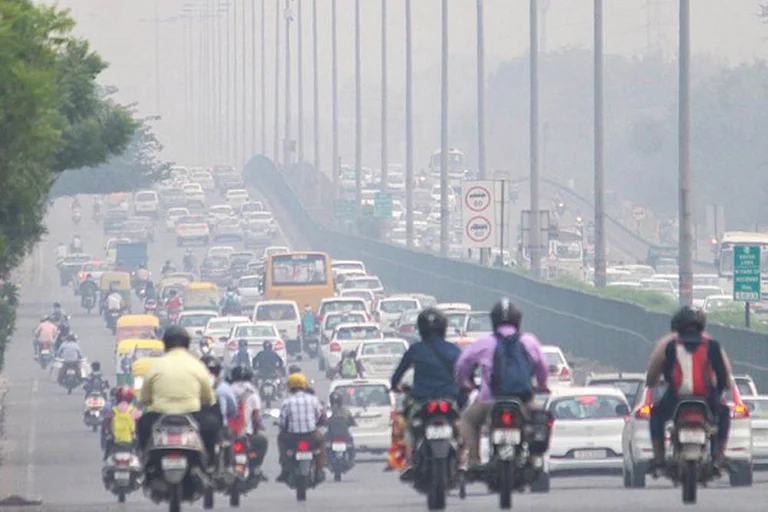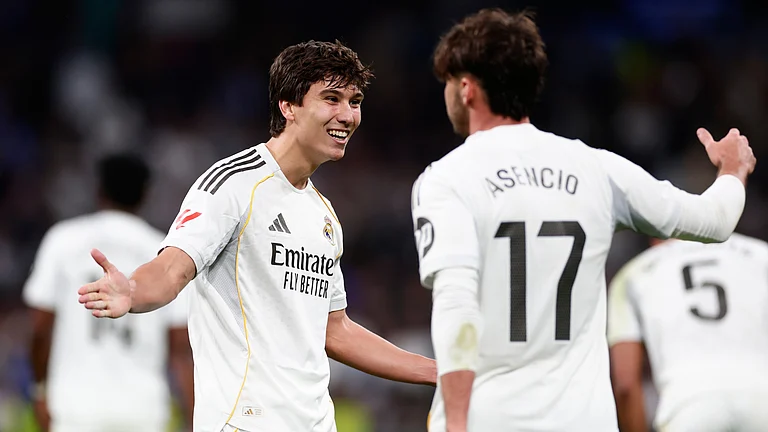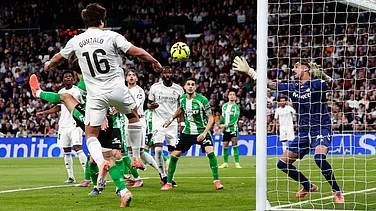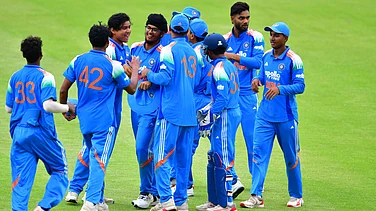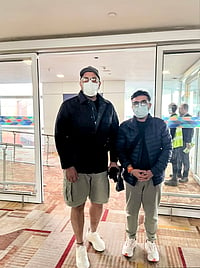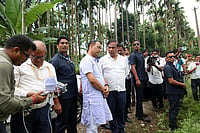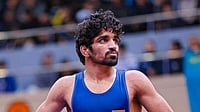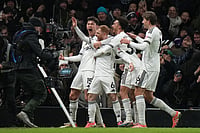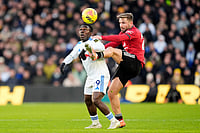Not even one Indian tennis player is ranked inside the top 300 in the singles ATP chart. (More Tennis News)
Not even one Indian player could earn direct entry into the singles main draw of the home ATP 250 event -- Tata Open Maharashtra.
Not even one Indian player, out of three, went beyond the first round after being handed wild card entries.
Not a single Indian player could make it to the Australian Open qualifiers this year.
In contrast, there are 11 Indian doubles players in the top 300 and four in the top 100. Another two are knocking on the top 100 door.
Yuki Bhambri, the singles prodigy who rose to the number one rank in the world in his junior days and also won a junior Slam, has also switched to doubles to prolong his career.
India is now largely a doubles tennis players nation.
The ones who made an impact post the Leander Paes-Mahesh Bhupathi era like Yuki, Sumit Nagal, Prajnesh, Ramkumar, none of them honed their skills within the Indian system.
Most of them played in different parts of Europe. Nagal had support from Bhupathi, who spotted his talent, while Ramkumar, for long, was supported by TNTA for his Barcelona training stint.
Yuki for his sheer talent had results going his way, so he didn't need much help from outside.
Prajnesh too was lucky in having the backing of his father, who took care of every little thing that his son needed for his training and even pushed him to continue when the Chennai southpaw was contemplating quitting after suffering knee stress fractures.
India does not have many ATP tournaments either. One ATP 250 and a maximum of three-four Challengers and that too confined to only three states.
The other states are still in deep slumber or their officials go on foreign trips with the national team when it takes courts for away team competitions.
India's next big hope, 15-year-old Manas Dhamne is also not training in the country. For the last two years, he is honing his skills for the vigours of the very physical tennis world at Piatti Tennis Centre in Italy. He gets a large chunk of funds from the MSLTA.
There have been private initiatives in the past to help Indian players and the latest one -- the doubles dream -- is for doubles exponents only.
All this paints a very bleak picture of Indian tennis as far as the singles game is concerned and in a way indicates that India should give up the singles Grand Slam dream as of today.
There are several reasons for India to reach this stage. The most basic issue is that not everyone and anyone can pick up a tennis racquet and start playing tennis. Not even for fun. That is why not many play this game even if they want to and there are reasons. It is restricted to a niche class.
Is it a common sight to see someone playing tennis in a North Eastern city, Bihar, Uttar Pradesh or Punjab? The answer is 'no'. But you can see youngsters playing cricket even in mountains or on a lonely barren patch of land.
Tennis equipment is not as accessible as other racquet sports like TT and badminton. Not even for recreational purposes. You can play badminton in the lanes of your colony but not tennis.
Everything related to tennis has a cost involved.
A beginner's level racquet costs Rs 4000. Then gutting is required to change every week or so and that too involves cost, a minimum of Rs 600 each time you break the strings on your racquet.
A can of three balls costs Rs 400 and a decent hitter will make the balls unusable in one good session of hitting.
Then tennis courts are not available for free anywhere. You have to pre-book and pay.
At a DDA Sports Complex, a minimum of Rs 115 (natural light) and Rs 155 (under floodlights) is what you need to pay to book a tennis court for an hour. At a good facility like DLTA Complex, the cost to book a tennis court is no less than Rs 500 for an hour.
Then you just can't buy a racquet, book a court and start playing.
You need someone to guide you to play strokes. The forehands and backhands look easy to play, but there is a whole science behind these shots.
You have to bend your legs, go under the ball, swing the racquet in a certain way, roll the ball using your wrists and pump just the required power into the shot. If not done, the ball is never going to land inside the lines.
Coaching too comes at a price. A decent tennis academy will charge a minimum of Rs 5,000 per month and that too in Group sessions. Individual training will cost more. At a top tennis academy, the monthly training will cost no less than Rs 25,000.
So even if one wants to play this sport for recreation purposes, one needs to invest at least Rs 10,000 every month. That's some amount for an Indian middle-class family.
The heavy cost involved is one of the reasons why 'Paddle' & 'Pickleball' are now being preferred over tennis in Europe and North America. The courts are smaller, the balls are different (depressurised) in these two new variants of tennis.
And European and South American nations largely dominated the ATP Challenger circuit in terms of winning the titles in year 2022 with France standing atop with 46 titles, including 24 doubles.
Tennis is not a mass sport and unless it becomes one, the availability of talent will remain an issue. The bigger the pool, the better it is. Precisely the reason India keep churning out world-class cricketers.
This is a very basic yet significant part of the problem Indian tennis is facing.
Then come major issues: Specialised coaching, requirement of physiotherapists and trainers for recovery, availability of right sports medicine experts and availability of enough tournaments within the country.
National Federation AITA often takes pride in conducting a lot of coaching courses and bringing ITF and ATP tournaments to the country. But it does not understand that it's not just the number of coaches which will bring about a change in the standard of playing.
The existing coaches are required to be upgraded too.
Also, what will AITA boast of if state associations refuse to host ITF tournaments or ATP Challengers? The state associations actually end up paying a certain royalty sum to AITA for hosting tournaments. So AITA should not take any credit for hosting these tournaments when it is actually making it tougher for states to host it by charging them a fee.
A big problem that Indian players are facing is the lack of enough ATP Challenger tournaments.
So far India has just three men's Challengers in a calendar year. The Indians are required to travel to costly European nations and other parts across the globe to earn ranking points and prize money. That burns a big hole in the pocket, with or without success.
When was the last time a big state association like DLTA hosted a Challenger? Having just nice people in these associations is not going to bring about any good change.
Plus, tennis is an individual sport where bringing all good players to train at a single centre is not feasible.
POSSIBLE SOLUTIONS
A) First and foremost, tennis has to be made a mass sport. For that to happen, AITA must make an arrangement with the schools across the country that ensures that tennis courts are laid in the school complexes (wherever possible) and students are encouraged to pick up the sport.
There has to be an arrangement where the racquets and the balls are made available to school students at subsidised rates. Certified coaches should be involved in coaching.
Inter-school competitions in all states should be a must.
AITA can also introduce a grading system for private academies on the basis of their infrastructure and coaching standard. That will help people in making informed choices when it comes to picking a tennis academy.
B) An internal ATP Challenger circuit needs to be created. Why isn't it possible for 10 AITA affiliate units out of 23 to host one Challenger tournament each in a year? That will make a huge difference. Playing at home, eating the food of choice keeps players keep players in a more relaxed environment.
AITA will have to make non-performing state units accountable. There has to be a premium to stay as an affiliate.
C) The players who have been there and done that, need to be involved.
No amount of money can buy the experience. The players like Leander, Bhupathi, Sania Mirza, Rohan Bopanna, Somdev Devvarman need to be involved in some capacity where they can provide an expert opinion.
The players are the biggest stakeholders in any sport and the ones who have proved themselves at the biggest stage should be utilised.
There could be hundred other ways to bring about a revolution but there needs to be a start from some point.







